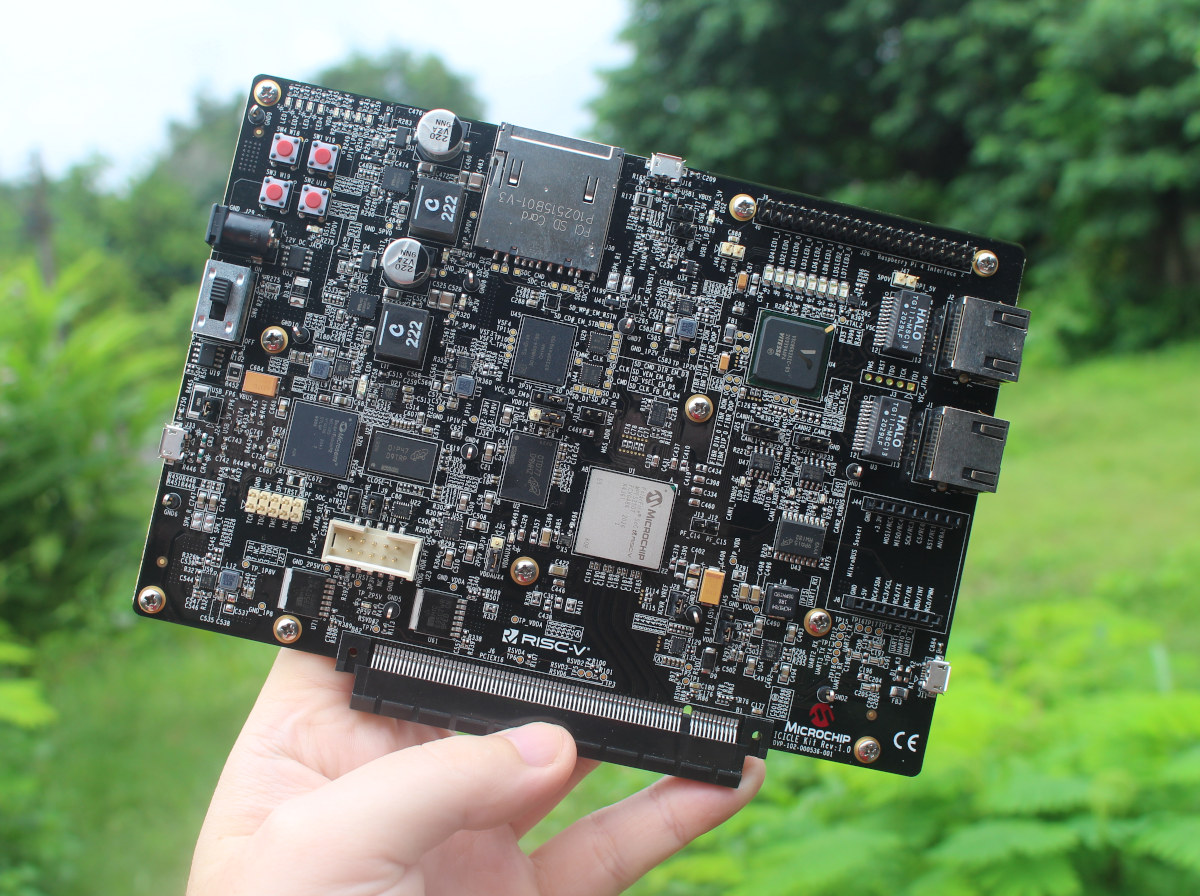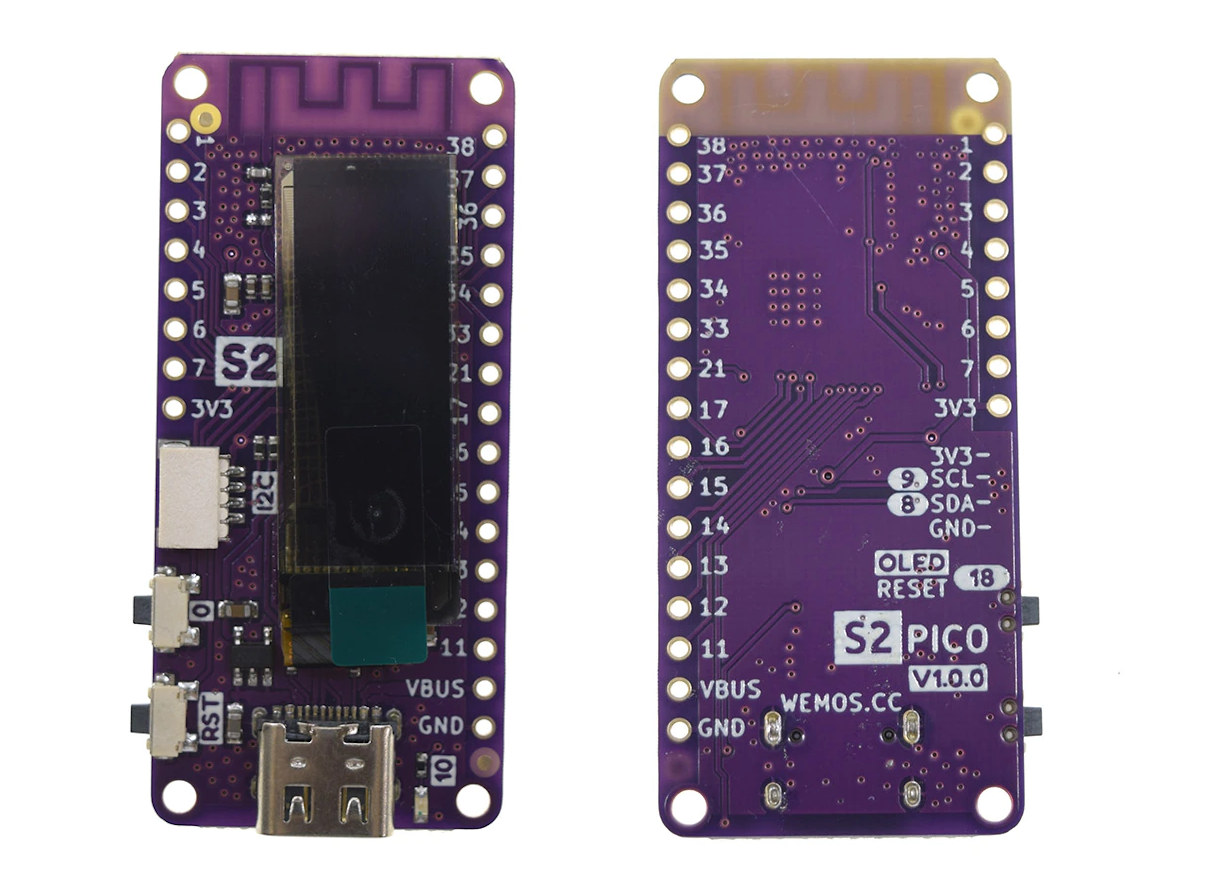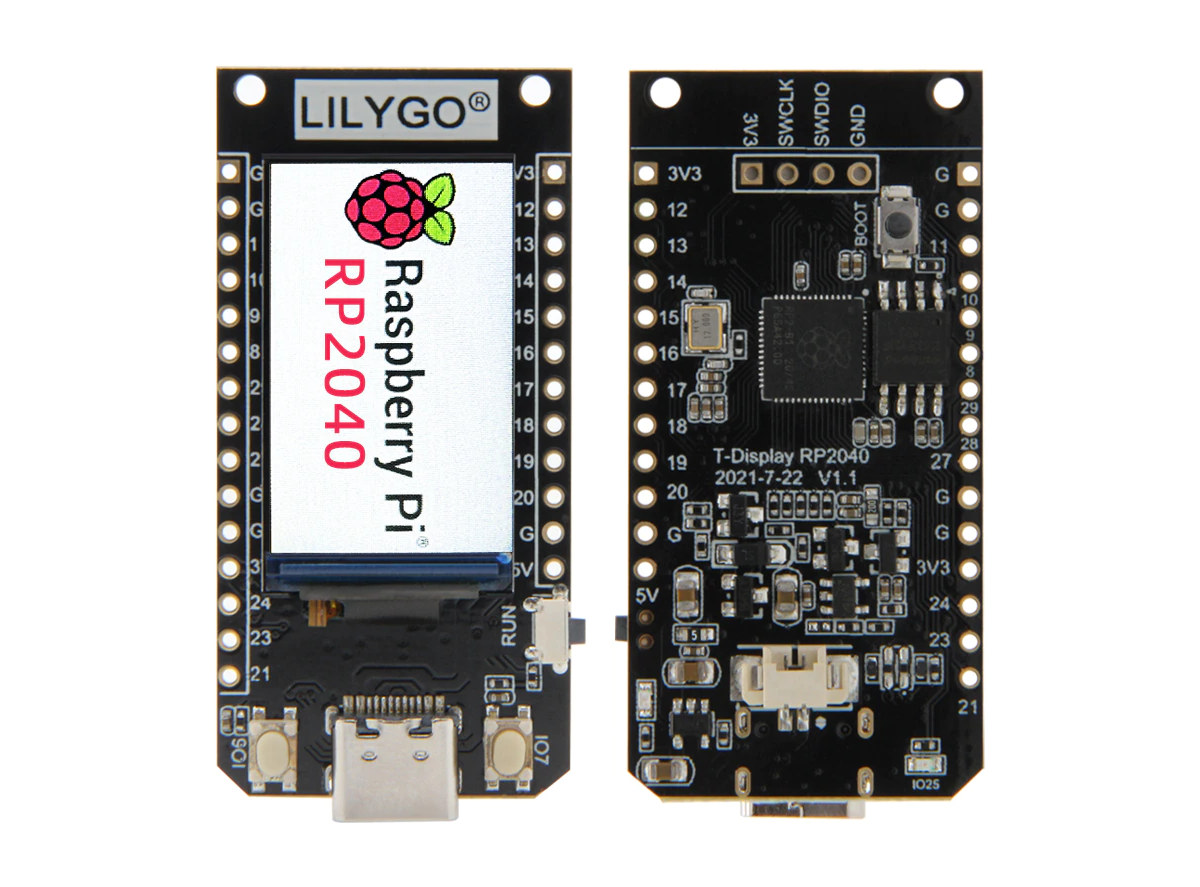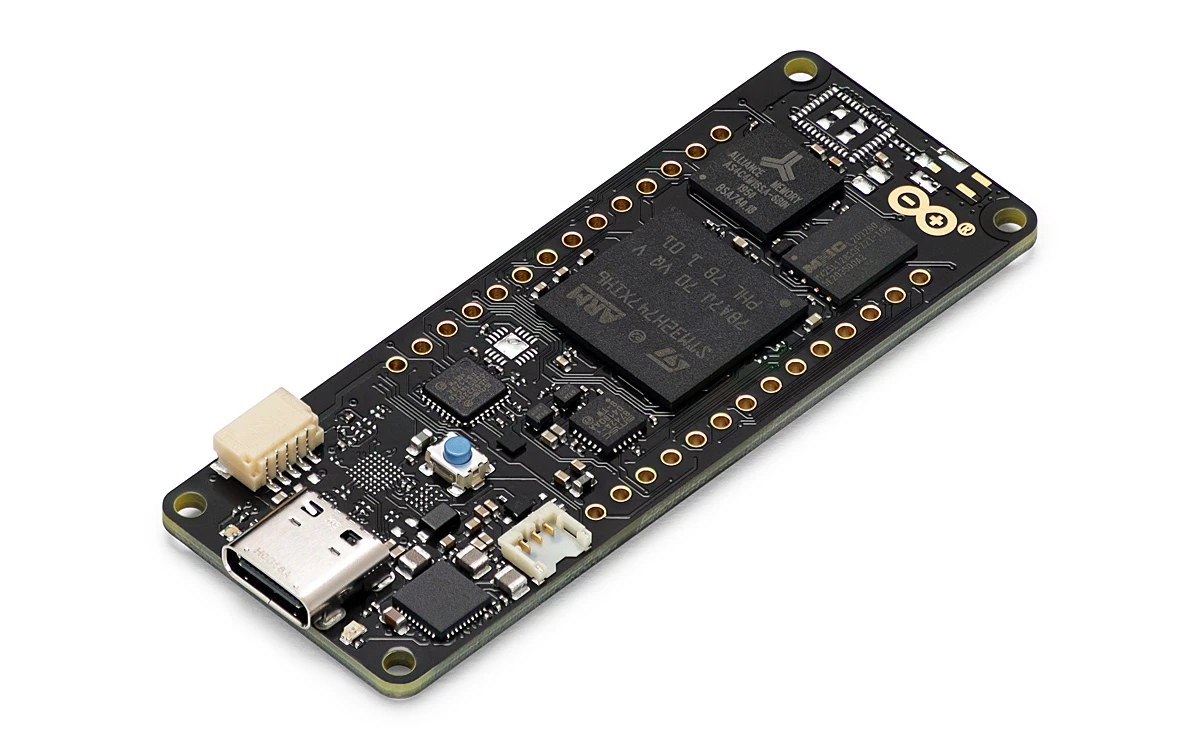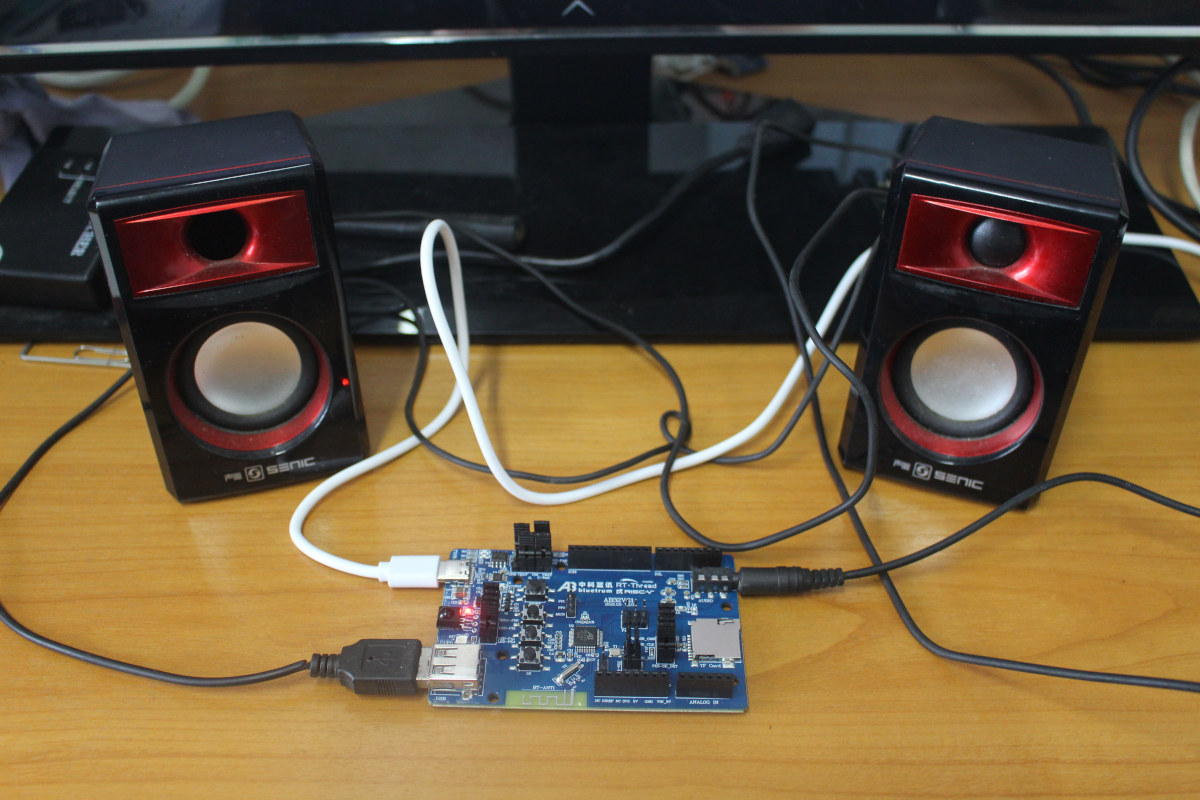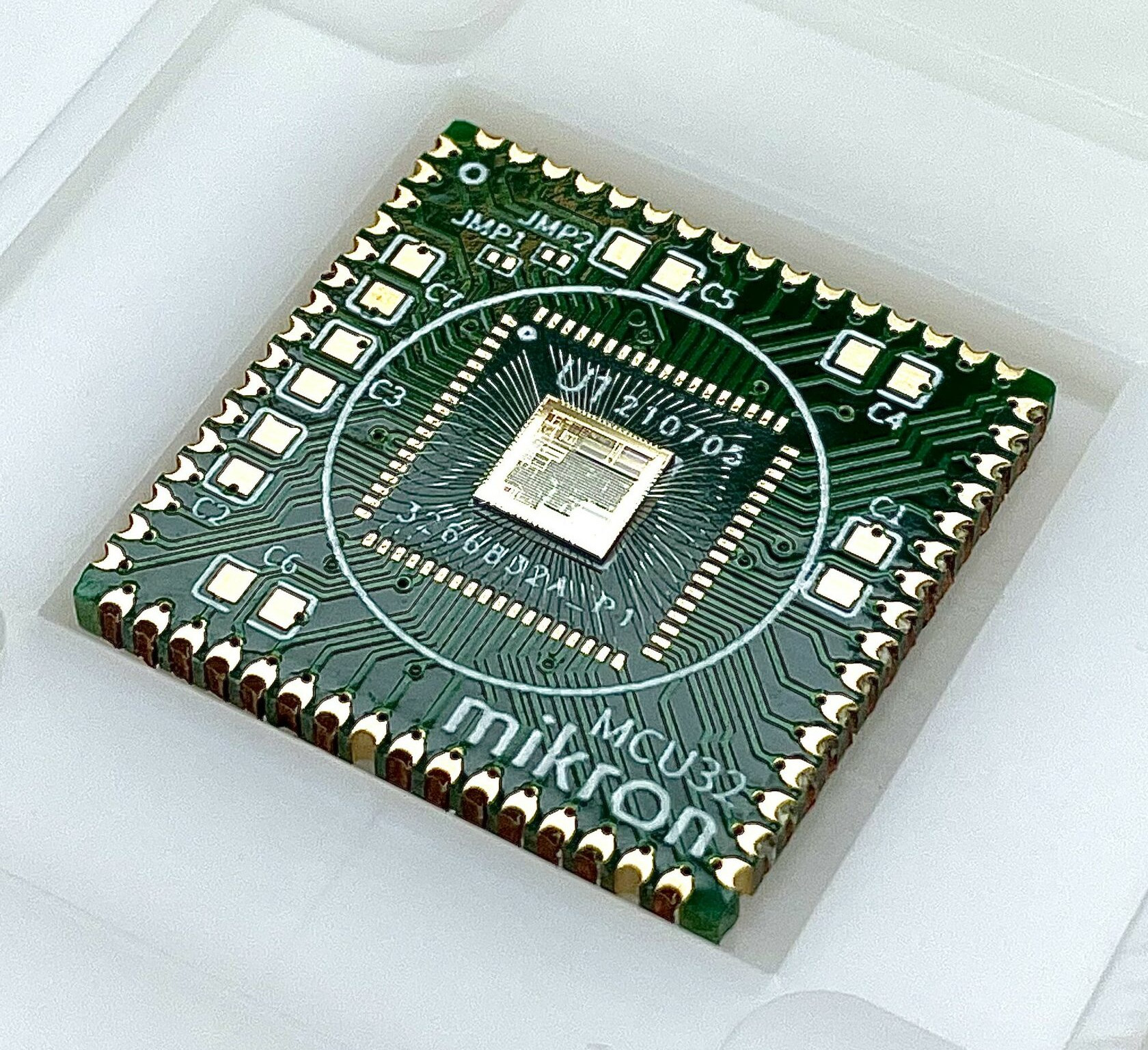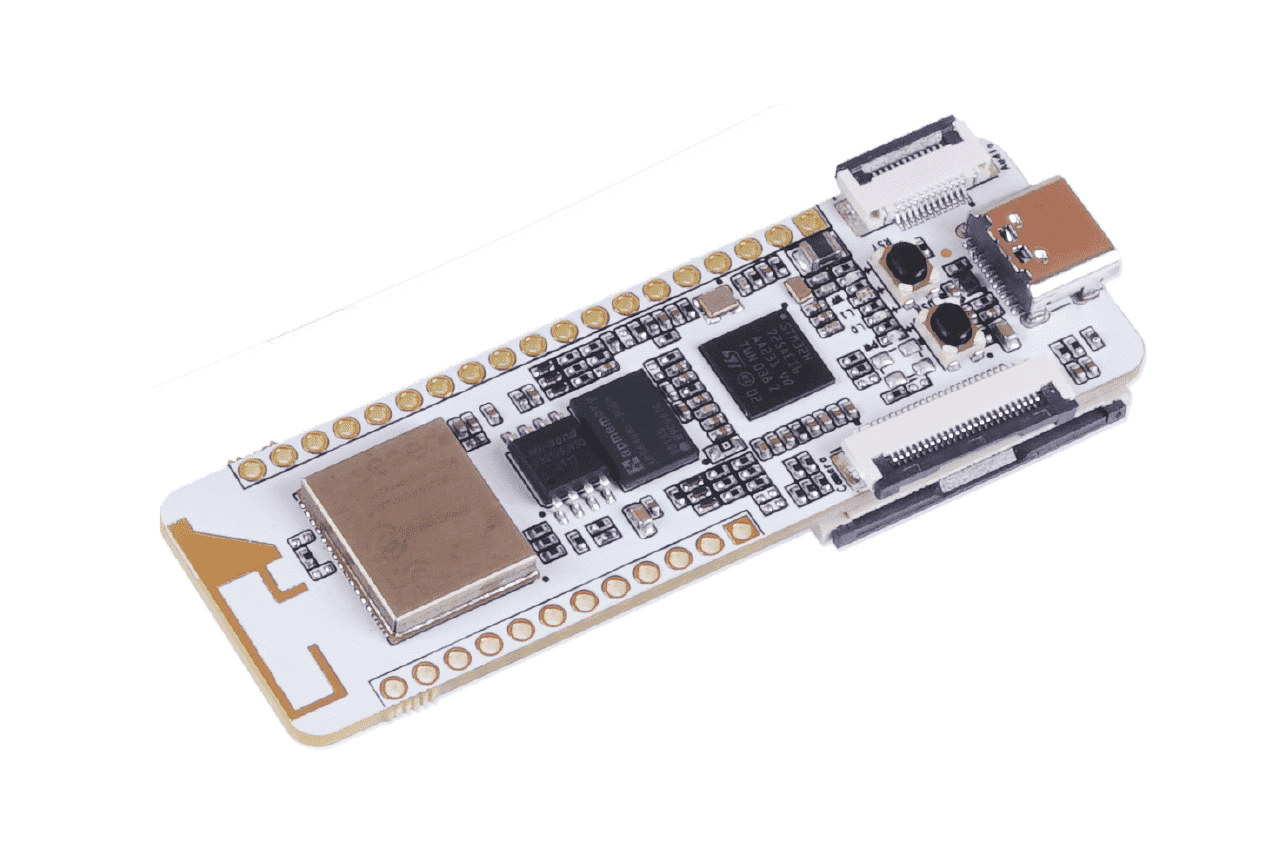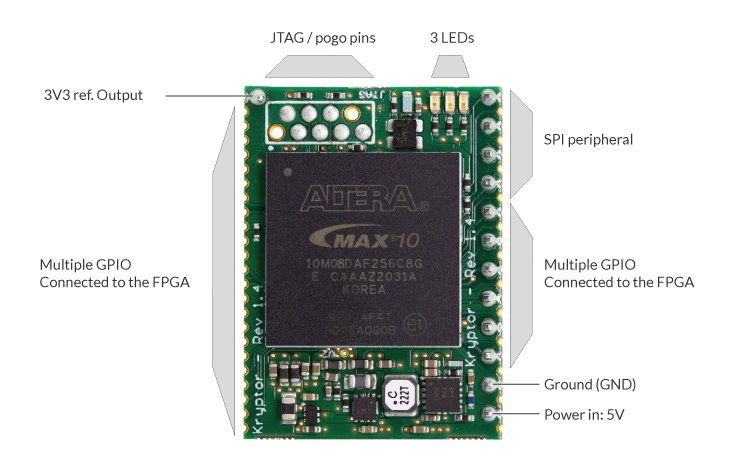Formally launched on Crowd Supply a little over a year ago, Microchip PolarFire SoC FPGA Icicle (codenamed MPFS-ICICLE-KIT-ES) was one of the first Linux & FreeBSD capable RISC-V development boards. The system is equipped with PolarFire SoC FPGA comprised a RISC-V CPU subsystem with four 64-bit RISC-V (RV64GC) application cores, one 64-bit RISC-V real-time core (RV64IMAC), as well as FPGA fabric. Backers of the board have been able to play with it for several months ago, but Microchip is now sending the board to more people for evaluation/review, and I got one of my own to experiment with. That’s good to have a higher-end development board instead of the usual hobbyist-grade board. Today, I’ll just have a look at the kit content and main components on the board before playing with Linux and FPGA development tools in an upcoming or two posts. Microchip PolarFire SoC FPGA Icicle Unboxing The board […]
LOLIN S2 Pico – A compact ESP32-S2 board with an OLED display
If you’re into small MCU boards with an integrated display, you’re in luck as LOLIN launched the S2 Pico board with ESP32-S2 and an OLED display about at the time same as LILYGO T-Display RP2040 board we covered yesterday. Wemos/LOLIN S2 Pico board offers WiFi connectivity, a 128×32 OLED display, USB Type-C port for power and programming, as well as the usual GPIO headers in a compact 50×23 mm form factor. LOLIN S2 Pico specifications: SoC – Espressif Systems ESP32-S2FN4R2 single-core Xtensa LX7 processor with 4MB flash, 2MB PSRAM, and WIFI connectivity only, i.e.no Bluetooth support Display – 128×32 OLED display based on SSD1306 driver USB – USB Type-C port for power and programming Expansion 16-pin + 8-pin headers with 21x GPIO with interrupt/PWM support, ADC, DAC, I2C, SPI, UART, USB OTG 4-pin I2C connector Misc – Reset and user buttons Power Supply – 5V via USB-C port Dimensions – […]
$10 LILYGO T-Display RP2040 board integrates a 1.14-inch color display
As its name implies, LILYGO T-Display RP2040 is a Raspberry Pi RP2040 based development board that comes with a display, and more exactly a 1.14-inch color display with 240×135 resolution and based on ST7789V SPI display driver. The T-Display RP2040 board joins other Rasberry Pi RP2040 boards with integrated displays like Arducam Pico4ML, but does so at a much lower price with LILYGO selling the board for just $9.98 on Aliexpress. LilyGO T-Display RP2040 specifications: Microcontroller – Raspberry Pi RP2040 dual-core Cortex-M0+ MCU with 264 KB of embedded SRAM Storage – 4MB SPI flash Display – 1.14-inch full-color IPS LCD Display (ST7789V SPI controller) with 240 x 135 resolution Expansion – 15-pin + 12-pin expansion headers with 14x GPIOs, 6x PWMs, up to 2x UART, up to 2x I2C, up to 2x SPI, 2x programmable high-speed I/O, 5V, 3.3V, Vbat, and GND Misc – Boot & enable buttons, 2x user […]
Portenta H7 Lite cost-optimized Arduino Pro board drops WiFi, USB-C video output, NXP secure element
Arduino Portenta H7 Lite is a cost-down version of Portenta H7 STM32H7 that shaves off a little over $30 of the Arduino Pro board by doing without a wireless module nor USB-C video output and opting for a lower cost Microchip ATECC608 secure element. Arduino says the new board provides a cost-optimized solution for companies developing high-end industrial machinery, laboratory equipment, computer vision, PLCs, robotics controllers, and mission-critical devices. Arduino Portenta H7 Lite specifications (with differences in bold or strikethrough): Microcontroller – STMicro STM32H747XI Cortex-M7 @ 480 MHz + M4 @ 200 MHz MCU with 2MB dual-bank Flash memory, 1 MB RAM, Chrom-ART graphical hardware accelerator System Memory – 2MB SDRAM (upgradeable up to 64MB) Storage – 16MB QSPI NOR Flash (Upgradeable up to 128MB) Connectivity 2.4GHz WiFi 802.11b/g/n up to 65 Mbps and Bluetooth 5.1 BR/EDR/LE via Murata 1DX module On-board 10/100M PHY Video I/F – MIPI DSI & […]
Getting started with Bluetrum AB32VG1 RISC-V Bluetooth audio board using RT-Thread
Bluetrum AB32VG1 is a development board based on AB5301A RISC-V microcontroller designed for Bluetooth audio applications as well as general-purpose projects that works with RT-Thread real-time operating system. RT-Thread sent me a board for review, and I’ll write about my experience in a getting started guide for Bluetutm AB32VG1 trying out the RT-Thread Studio IDE with the LED blink and audio samples, as there’s no Bluetooth sample at this time… Bluetrum AV32VG1 Unboxing The board ships with a USB-C cable for power and programming. It offers Arduino UNO headers for expansion, a MicroSD card slot, a USB host port, a 3.5mm audio jack, an IR receiver, and a few buttons. There’s nothing to do on the bottom of the board apart from a QR Core for the WeChat app. There are also several configuration jumpers, but I could not find any documentation about these and did not mess with the […]
Mikron MIK32 – Made in Russia 32-bit RISC-V MCU offers features similar to STM32L0 MCU
The Mikron MIK32 is a 32-bit RISC-V microcontroller made in Russia with features similar to an STMicro STM32L0 Cortex-M0+ MCU that shows how RISC-V open-source architecture can help lower the barrier to entry, and let more companies design their own chips. The MIK32 microcontroller features CPU IP from Syntacore based in Saint Petersburg following the RV32IMC profile. Clocked at 32 MHz, the MCU comes with I2C, UART, SPI, ADC, DAC interfaces, as well as various timers, an interrupt controller, and more. Mikron MIK32 specifications: CPU Core – 32-bit RISC-V up to 32 MHz with 32 registers, embedded multiplier, debugger (TAP controller and JTAG interface), and interrupt controller Memory & Storage – 256 bytes OTP ROM, 16KB RAM, 8KB EEPROM Interfaces Storage I/F – SPI, Dual-SPI, Quad-SPI interfaces for NOR and NAND flash devices 4-channel DMA controller supporting low-power modes 2x I2C, 2x UART with synchronous mode support, 2x SPI 12-bit […]
Wio Lite AI – An STM32H725A Cortex-M7 board for AI vision applications
Wio Lite AI is another development board from Seeed Studio’s “Wio Lite” family. The board is based on STMicro STM32H725A Cortex-M7 microcontroller with a dual-band WiFi and Bluetooth module, as well as camera & display interfaces for connected AI vision applications. The board builds upon the earlier Wio Lite and Wio Lite W600 boards with built-in wireless connectivity but offers much more processing power for computer vision or other applications. Wio Lite AI specifications: MCU – STMicro STM32H725AE Arm Cortex-M7 microcontroller @ 550MHz with DSP instructions, 512 KB flash, 564 KB RAM Memory – 8MB PSRAM (from AP Memory) Storage – 16MB SPI NOR flash and MicroSD card slot Display I/F – 40-pin FPC connector for LCD RGB565 or RGB888 displays Camera – 24-pin FPC connector for DCMI camera (OV2640) Audio – 12-pin FPC connector for audio Connectivity – Dual-band 2.4GHz / 5GHz Wi-Fi and Bluetooth 5.1 Expansion – Feather […]
Kryptor FPGA – Tiny MAX10 FPGA board works as a hardware security module (Crowdfunding)
Kryptor FPGA, sometimes just called Kryptor, is a compact Intel/Altera MAX10 FPGA development board mostly designed for encryption, and acting as a dedicated Hardware Security Module (HSM) with a custom soft-core from Skudo OÜ. But obviously, you could also use the FPGA board for other purposes. Hardware encryption can be quite more secure than software-based encryption with reduced attack surfaces, especially since data processing can be done in the FPGA RAM. The HSM can be used to encrypt files, videos, emails, IoT messages, etc… from various hardware platforms including Arduino and Raspberry Pi boards. Contrary to closed-sourced commercial solutions, the soft-core is open-source and as such can be verified by third parties to make sure there aren’t any backdoors or security flaws. Kryptor FPGA specifications: FPGA – Intel/Altera MAX10 8K LE ( 10M08DAF256C8G) FPGA @ 100 MHz with 8000 logic elements (LE), 1376 Kb flash, 378 Kb total RAM, up […]


